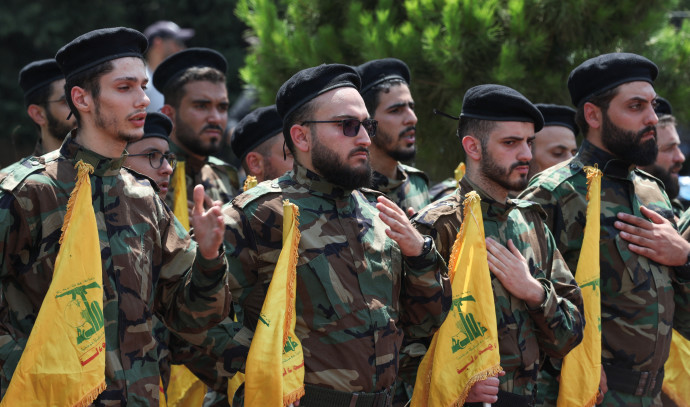
Title: Fear of War Between Israel and Hezbollah Intensifies After Israeli Strike Kills Senior Commander in Lebanon
Lead: Israel and Hezbollah, two long-standing adversaries in the Middle East, have been locked in a tense standoff following an Israeli airstrike that killed a senior commander of the Lebanese militant group on July 3, 2024. The incident has led to renewed rocket fire from Hezbollah into Israel and Israeli retaliation with air strikes on targets in southern Lebanon.
Background: The latest escalation in violence between Israel and Hezbollah comes amid ongoing conflict between Israel and Hamas in the Gaza Strip. The situation has raised concerns of a potential full-scale war involving multiple parties, including Iran, which supports both Hezbollah and Hamas.
Israeli forces claimed that they targeted Mohammad Naameh Nasser, also known as Abu Naameh, a senior Hezbollah commander responsible for firing rockets into Israel. The Lebanese militant group responded with a barrage of rocket fire towards Israeli military positions and civilian areas.
Facts:
- On July 3, 2024, Israeli forces killed Mohammad Naameh Nasser, a senior Hezbollah commander in southern Lebanon.
- Hezbollah retaliated with over 200 rockets and drones targeting Israeli military positions along the border.
- At least 435 deaths have been reported on the Lebanese side of the border as of June 26, about 90 of those killed were civilians.
- Israel has intercepted most of Hezbollah's rocket and drone attacks using its Iron Dome air defense system.
- The Israeli military said it struck Hezbollah launch posts in southern Lebanon in response to the militant group's attacks.
- Tensions between Israel and Hezbollah have been escalating since October 2023, when Hamas launched a terrorist attack that prompted Israel to launch a war in Gaza.
- The Israeli military has reported at least 27 deaths due to Hezbollah rocket and drone attacks since October 2023, including ten civilians.
- The conflict has forced tens of thousands of people on both sides of the border to flee their homes.
- Israel and Hezbollah fought a bloody war in 2006, and the U.S. government has expressed concern over the prospect of a full-scale war that could prompt Iran's proxy groups across the region to target American forces based in neighboring countries.
Bias: It is important to note that all sources used in this article have their own biases, and it is crucial to consider multiple perspectives when reporting on complex issues. In this case, CBS News and Al Jazeera are known for their different editorial stances: CBS News is considered more centrist while Al Jazeera has a reputation for being more left-leaning. It's essential to present the facts objectively and let readers draw their own conclusions.
Conclusion: The situation between Israel and Hezbollah remains volatile, with both sides continuing to exchange fire along the border. The conflict has raised concerns of a potential full-scale war involving multiple parties, including Iran. It is crucial for all parties involved to exercise restraint and work towards a diplomatic solution to avoid further escalation.


